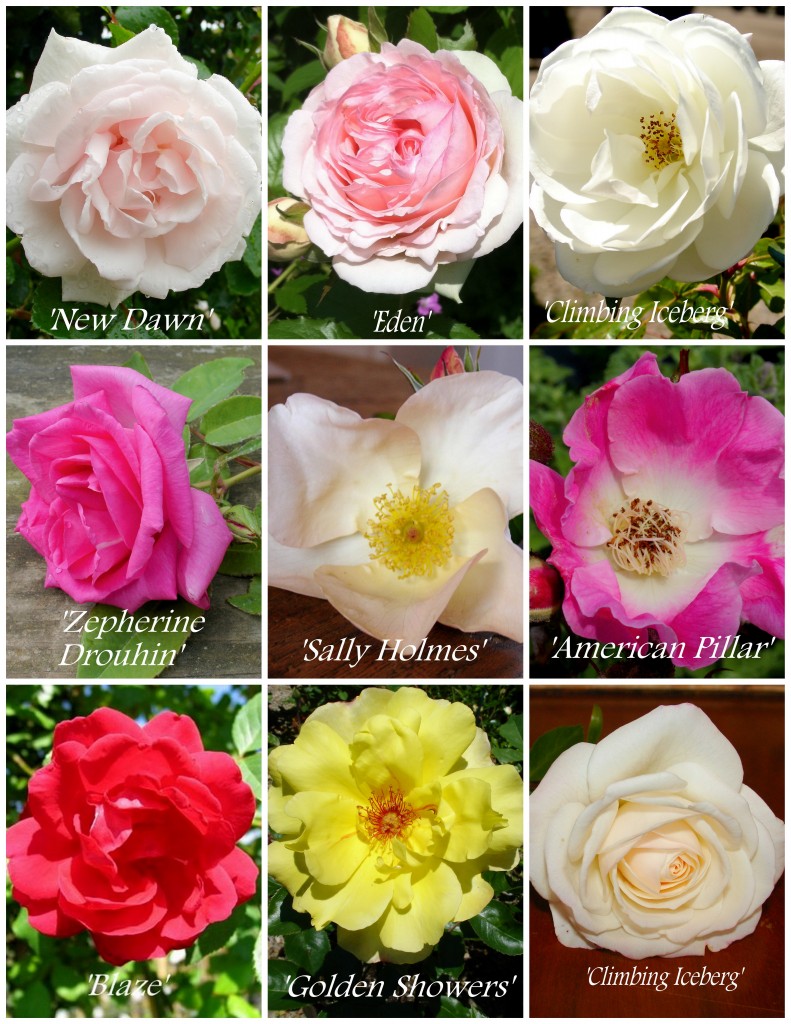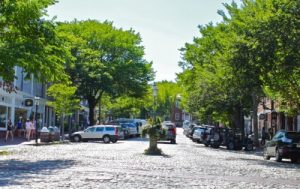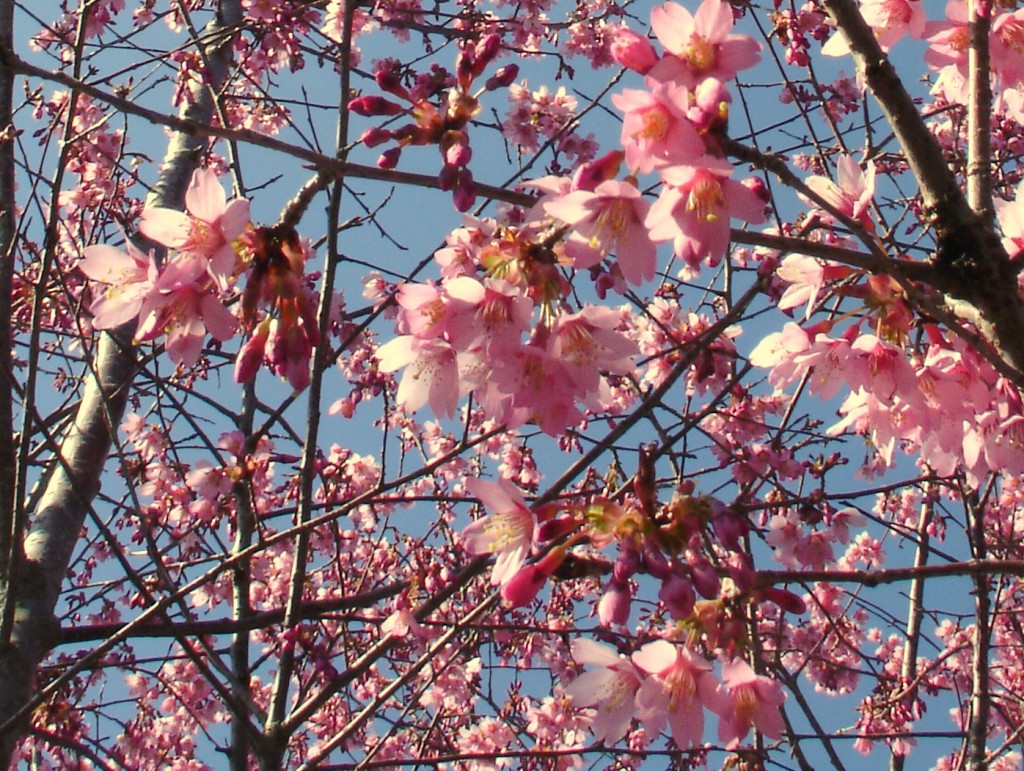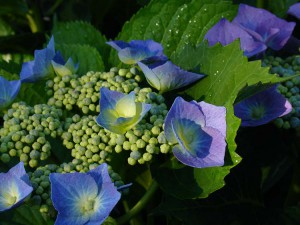In this video Brad discusses and demonstates the steps to create a spiral topiary from boxwood:
Woody Ornamentals
Butterfy Bush
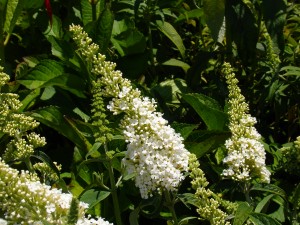
Butterfly-bushes are now in full bloom across the island. This deer-resistant and drought tolerant plant is a great addition to any Nantucket garden. First described in 1860’s by French Jesuit, Perre David, this plant now bears his name. The long, nodding inflorescenses are composed of hundreds of tiny, fragrant flowers that provide nectar for butterflies and other insects. Many afternoons at the nursery in the summer we are delighted to find our Buddleia alive with Monarch or Swallowtail butterflies. Plant them in your garden, and you can have the same experience year after year!
Buddleia are very easy to grow. They require a minimal amount of care and give a maximum amount of pay-off. In order to keep these large shrubs performing year after year, follow these few pointers:
- Plant Buddleia in full sun, with well drained soil. These plants do not tolerate overly moist soil, and will suffer in damp areas, especially over the winter.
- Monitor water during prolonged periods of drought. Butterfly-bushes are often the first plants to wilt in new plantings when weather is hot and dry
- Buddleia bloom on new wood. Prune back all the previous seasons growth when the plants are dormant. In windy areas, where plants can be blown out of the ground in winter, consider pruning before Christmas. Otherwise, grab your loppers in early spring, before growth resumes. Plants pruned to a foot or so off the ground will generally reach 6-8′ tall during the summer, and reward the gardener with hundreds of blooms.
- Deadhead spent flowers as they appear to prolong the bloom period. Try to make cuts just above a new pair of flowers and you can expect flowering to continue throughout August.
There are many cultivars available with different flower colors. Some of the most popular are listed below:
- Adonis Blue tm aka ‘Adokeep’ A Proven Winners selection. Deep blue flowers. Compact growth habit, 5’tall.
- ‘Black Knight’ A long-time favorite. Deep purple flowers. Very vigorous, 8-10′ tall. Spent flowers sometimes form small, attractive, shiny purple fruit.
- Lo and Behold r series. A Proven Winners selection. This series has multiple colors in it, Blue Chips tm, being the most available currently. Very compact habit reaching 3′ tall and wide’
- ‘Lochinch’ A hybrid Buddleia. Light lavender flowers. Very vigorous, 12-15′ tall. (Though, I’ve not seen any nearly this tall on Nantucket)
- ‘Nanho Blue’ Mauve-blue flowers. Compact series, growing 6-8′ tall and wide.
- ‘Nanho Purple’ Magenta-purple flowers. One of the smaller Buddleias, reaching only 5′ tall with an arching form.
- ‘Pink Delight’ Very large bubble-gum pink flowers. 6-8′ tall, rounded-compact form. Deadheads are unsightly, and are best removed immediately so as not to detract from fresh flowers.
- ‘Potters Purple’ Bluish-purple flowers. Not as fragrant as some others. 6-8′ tall and wide.
- ‘Royal Red’ Very large deep purple/red flowers. Vigorous, upright habit reaching 10′ tall.
- ‘White Profusion’ Very large white flowers. 6-10′ tall, upright habit. Deadheads appear nearly black, and are extremely unsightly next to clear white flowers, be sure to deadhead.
Climbing Roses
One of the most romanticized images of Nantucket is the “‘Sconset Rose-Covered Cottage”. The most prevalent rose in Siasconset is ‘American Pillar’. Introduced in 1902 by Van Fleet, it’s stunning when in full bloom, covered in sprays of carmine flowers with white centers. Of course, there are many other climbers available to us in a variety of flower forms and colors. Following is a list of climbing roses that are readily available and their characteristics.
Rosa ‘New Dawn’
Clusters of Pink buds, opening to large, light pink double blossoms that fade to nearly white. Blooms on new and old wood. Glossy dark green leaves. Lightly scented. Introduced in 1930. Climbs to 20’ tall. Good disease resistance.
Rosa ‘Eden’ aka ‘Pierre De Ronsard’
Large rounded, fully double, flowers open with a deep carmine center fading to white at the edge of the blossom. Free-flowering. Glossy dark green leaves. Lightly scented. Introduced in 1987. Slowly climbs to 12’ tall. Good disease resistance. Shade tolerant.
Rosa ‘Climbing Iceberg’
Clear white, double blooms appear in clusters on old wood only. Mild sweet rose scent. Introduced in 1968. Climbs to 14’ tall.
Rosa ‘Zepherine Drouhin’
Pink, frilly, double blossoms with a white eye. Strong bourbon rose scent. Re-blooming. Practically thornless. Introduced in 1868. Climbs to 8 to 10’ tall. Shade tolerant.
Rosa ‘Sally Holmes’
Buff-colored buds open to large, single white flowers. Color is distinctively pink in cooler temperatures. Slight fragrance. Blooms on new wood. Free-flowering. Introduced in 1976. Climbs to 6 to 12’.
Rosa ‘American Pillar’
Clusters of pink, single blossoms have a white eye. Lightly scented. Blooms only in early summer. Deep glossy green leaves. Vigorous rambling habit. Introduced in 1902. Climbs to 20’ tall. Prone to powdery mildew early in the season.
Rosa ‘Blaze Improved’
Clusters of pure red, double flowers. Lightly scented. Blooms on new and old wood. Introduced in 1932. Climbs to 14’ tall.
Rosa ‘Golden Showers’
Abundant clusters of single, yellow flowers with frilly petals. Sweet licorice fragrance. Blooms on new and old wood. Introduced in 1956. Climbs to 14’ tall.
Elms
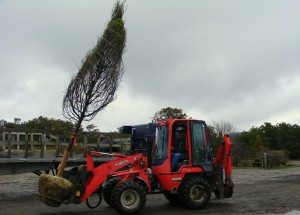 A favorite of early settlers, the American elm has fallen out of favor in recent decades. Since the onslaught of Dutch elm disease and the demise of thousands upon thousands of trees across America and Canada, many are afraid to plant them today. I’m happy to inform our customers that the island is actually a great place to grow elms! Nantucket is one of the few towns in America that still boasts hundreds of healthy elms planted and thriving along its streets.
A favorite of early settlers, the American elm has fallen out of favor in recent decades. Since the onslaught of Dutch elm disease and the demise of thousands upon thousands of trees across America and Canada, many are afraid to plant them today. I’m happy to inform our customers that the island is actually a great place to grow elms! Nantucket is one of the few towns in America that still boasts hundreds of healthy elms planted and thriving along its streets.
Be assured that there are many varieties available that are resistant to Dutch Elm Disease and other insect and diseases. Some of these are cultivars of Ulmus americana, our native elm tree. But there are other species as well, like Ulmus parvifolia, Chinese or lacebark elm, and many hybrids.
American, hybrid and Asian elms are generally fast-growing, adaptable trees that are tolerant of poor soil, drought and even salt spray. The species we sell are mostly large trees with ovate (oval-shaped) dentate (serrated) green leaves of varying sizes. They make wonderful shade trees in the residential landscape as well as excellent street and park trees in towns and cities.
In 2005 the National Elm Trial was planted with a large variety of test plots across the country. The results of this ten year evaluation can be found on the Colorado State University’s website. The results from the Vermont test plot can be found here: https://bspm.agsci.colostate.edu/files/2013/03/Vermont-Elm-Trial-March-1-2016.pdf
Some of the best that we carry are listed below:
Ulmus americana ‘New Harmony’: Introduced by the US National Arboretum. Upright-arching, vase shaped canopy. Similar to ‘Valley Forge’, but possibly with a more upright habit, requiring less training. This cultivar also outperformed ‘Valley Forge’ in the National Elm Trial test plot in Vermont. Resistant to Dutch elm disease. Grows 70′ tall.
Ulmus americana ‘Princeton’: Described as an excellent vase-shaped form by Dirr. Very fast growing, with large, deep green leathery leaves. ‘Princeton’ did well in the National Elm Trial test plot in Vermont, and is a recommended variety. This tree is likely to grow sixty or more feet tall.
Ulmus americana ‘Valley Forge‘: Introduced by the US National Arboretum. Upright-arching, vase shape with a full canopy. Perhaps a little more rangy than ‘Princeton’. Very resistant to Dutch elm disease. These trees will likely reach 60-70 feet.
Ulmus Accolade(r) aka ‘Morton‘: A hybrid elm, with deep green foliage. American elm-like shape. Accolade (r) did well in the National Elm Trial test plot in Vermont, is a recommended variety. Grows 50-60 feet tall, with a spread of up to 40 feet.
Ulmus Allee(r): A hybrid, this variety looks a lot like Chinese elm, with the overall shape of American elms. The canopy is wider, somewhat less vase-shaped than American elms. Mature trees are easily identifiable by the orangey colored lenticels that form on the furrowed bark. The green glossy leaves are smaller than American elms. Very resistant to Dutch elm disease. This tree will likely reach 60-70 feet tall in ideal conditions
Ulmus ‘Patriot’ aka ‘Prospector’: Released in 1993, this elm is a modern hybrid of American and Chinese elm species with excellent resistance to Dutch elm disease and elm leaf beetle. It has a moderately vase-shaped canopy. ‘Prospector’ did well in the National Elm Trial test plot in Vermont, and is a recommended variety. The deep green, glossy leaves are 4″ long and 3″ wide, changing to yellow in fall. These trees are expected to grow to 50 feet tall.
Ulmus parvifolia ‘Dynasty’: This Chinese elm was bred at the US National Arboretum from seeds that were brought to America from the Forest Experiment Station in Keijo, Japan in the early part of the last century. The canopy of this elm is more rounded than American elms, with the fine foliage characteristic of their Chinese cousins. These trees are expected to grow to 50 feet tall and nearly as broad.
Okame Cherry
Those of us living on the island year-round have the opportunity to enjoy spring-flowering trees. One of the nicest of these, is the Okame Cherry. Prunus ‘Okame’ is the first cherry tree to bloom in the spring on Nantucket.
Its carmine flowers cover the branches in late March or early April, appearing before leaves unfurl. The habit is described as broad-columnar with a height between 20-30 feet. Okame cherries are available in both a standard tree form and a multi-stem form. These trees are very adaptable, but prefer full sun and good soil. They grow very quickly and will reach their mature height by 15 years of age.
We have 3 large multi-stem specimens in stock right now that would make an amazing show in a larger landscape. We also have a beautiful group of standard trees available. If you like cherry trees and are considering planting one, now is a great time to stop by the nursery to see what ‘Okame’ looks like in person!
How to Prune Mop Head Hydrangeas
There are a lot of things that define what kind of gardener a person is. Some of us are spring clean-up people, some are fall clean up people; some like to prune woodies in fall, some in spring. If you are a spring pruner, it’s the perfect time to get out your pruners and go to work! One of the plants often pruned this time of year is Hydrangea macrophylla.
When Pruning Hydrangeas keep your objectives in mind:
- Removal of spent flowers from the previous season.
- Removal of dead wood.
- Thinning out the shrub by removing: Stems that are older than three years; Large complex branches; Branches that cross the center and tend to rub on more desirable stems; Stems that run horizontally along the ground and root, increasing the overall size of the plant.
- Shaping the shrub into a natural-looking, balanced, spherical shape.
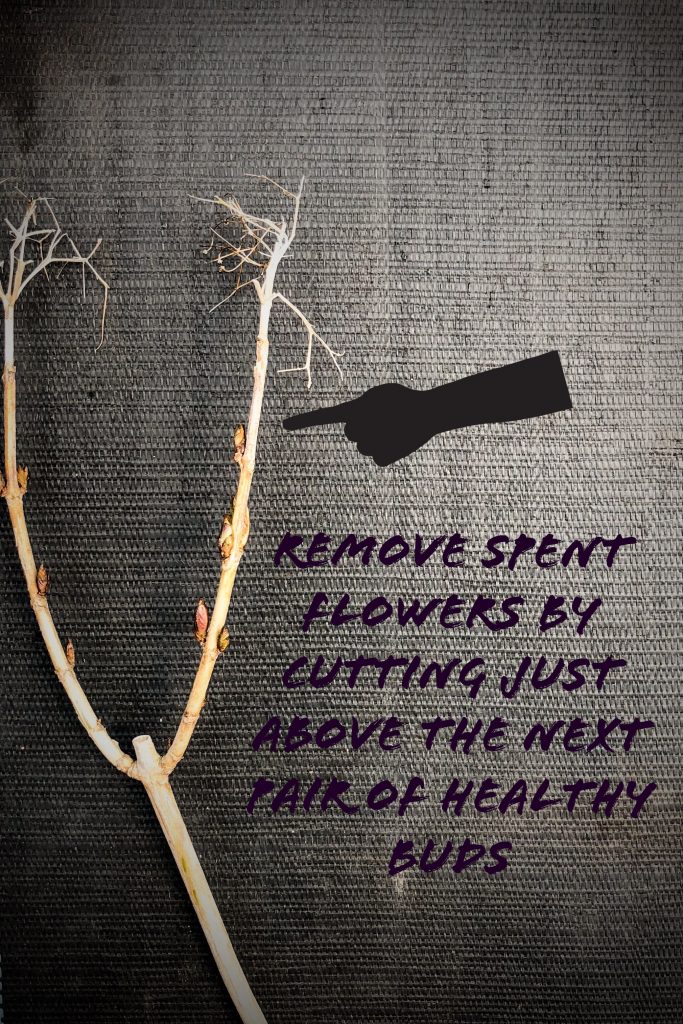


Follow these steps:
- Take a moment to look at the over-all shape and size of the plant. Is it too large for it’s space? Hydrangeas in foundation plantings tend to “eat the lawn” over time. Consider widening the bed to accommodate the mature size of the plants, instead of pruning the plant back to an unnatural-looking shape. * ‘Nikko Blue’ Hydrangeas, in particular, tend to get very tall and wide – covering windows and brushing against shingles on the side of the house. There is no way to keep a ‘Nikko Blue’ Hydrangea blooming each year and shorter than 4 feet, if you are battling huge plants, consider replacing them with a smaller variety.
- Remove all spent flowers from the tips of the stems. All pruning cuts should be made just above a healthy set of buds. There is no need to “tip branches” if there are no faded flowers to remove. Buds overwintering in the top portion of the plant have the potential to flower. If too much material is removed, the plant may not flower at all.
- Remove all dead and damaged stems. It is preferable to completely remove dead stems at ground level where possible.
- Remove about a third of the overall bulk of the stems, following the guidelines above. This helps increase sun and air circulation in the center of the plant, initiating flower bud formation and strong new growth from the base.
- If you must, cut back no more than a few feet from the top of the shrub, to get it below a window or railing. Keep in mind, the plant will quickly grow back to it’s natural size by the middle of the summer.
- Step back, and take a look at your work. Make final cuts, leaving a rounded, balanced shrub.
Alternaria Leaf Spot on Privet
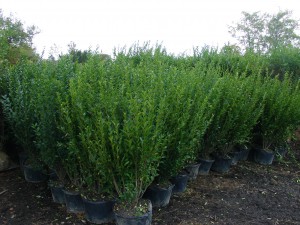 Every year there seems to be another emerging threat to our plants that is fungal in nature. Nantucket’s intrepid gardeners are all used to fighting with black spot on roses and powdery mildew on border phlox, but there are many other spores and spots floating around out there that effect other species. One the up-and-comers is an infection that effects privet: Alternaria Leaf Spot.
Every year there seems to be another emerging threat to our plants that is fungal in nature. Nantucket’s intrepid gardeners are all used to fighting with black spot on roses and powdery mildew on border phlox, but there are many other spores and spots floating around out there that effect other species. One the up-and-comers is an infection that effects privet: Alternaria Leaf Spot.
This fungus causes ugly necrotic spots on the leaves, followed by yellowing and leaf drop. Severely effected plants can have substantial defoliation by the end of the growing season. Like many fungal diseases, symptoms usually first appear inside the plant where air circulation is low. This often makes early detection a problem, so treatment is delayed.
As far as we know, this fungus is more of a problem in production nurseries where thousands of privet plants are grown close together, providing a constant supply of inoculum for reinfection. Although we have seen spots similar to these on privet on Nantucket in the past, our customers didn’t report any widespread issues with this fungus last summer.
For more information on Alternaria Leaf Spot, check out this link to Cornell extension: http://ccesuffolk.org/assets/galleries/Agriculture/Commercial-Nursery-and-Landscape-Management/Alternaria-leaf-spot-on-privet-fact-sheet-revised-4-11.pdf
We source our privet from reputable growers and haven’t found alternaria leaf spot to have been a problem with our suppliers in the past. However, we do inspect each shipment as it arrives and will continue to make selling the highest quality plants our goal.
Edibles in the Landscape
In this video, Brad discusses a major trend in Landscaping today: Integrating edibles into the landscape. Check it out!
How to Prune Wisteria in Summer
In this video, Brad explains how to prune Wisteria vines during the summer. Check it out!
How to Prune Wisteria in Winter
Brad explains how to do winter prune Wisteria Vines while dormant. Check it out!

